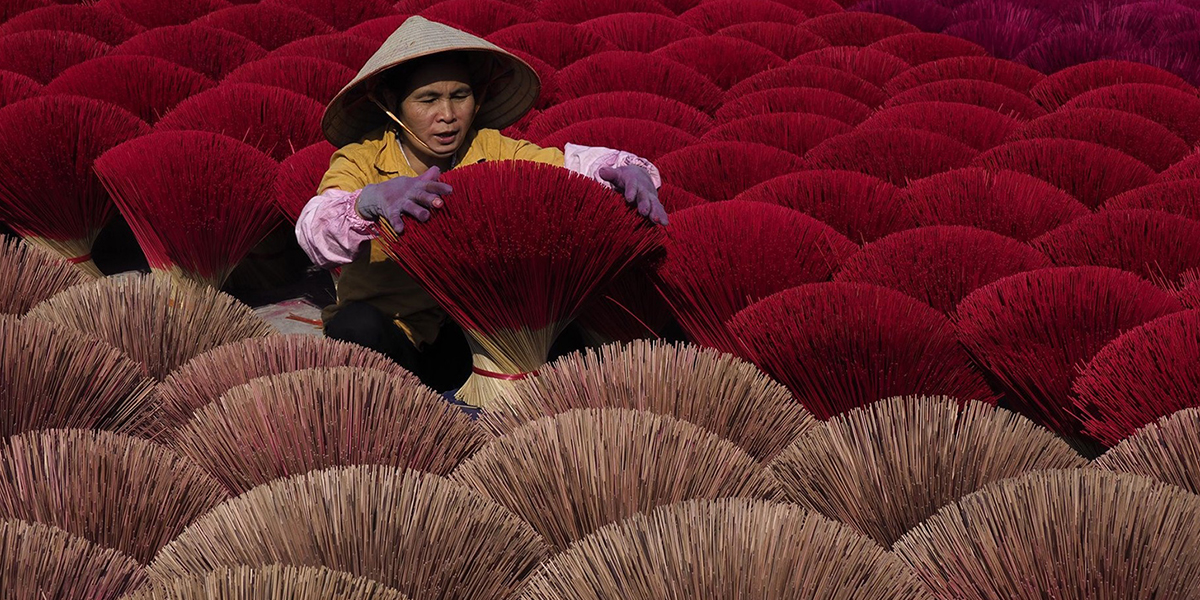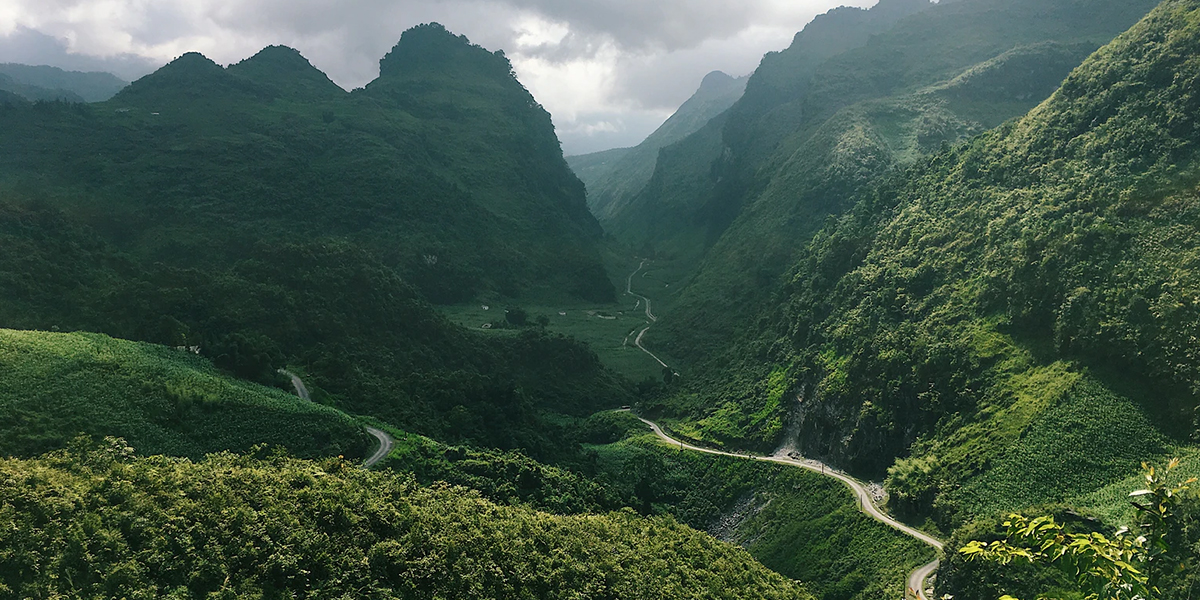About 100 years ago, in the summer of 1924, the first remains of Dong Son culture in Vietnam were unearthed by a farmer when he was fishing along the bank of the Ma river. This event drew enormous attention from scholars and archeologists both locally and internationally and laid the foundation for a revelation of a great era in the culture of Vietnam. The foundation and development of this culture are supposed to be in parallel with Sa Huynh culture in coastal Central Vietnam and Dong Nai culture in Southern Vietnam.
I - An overview of Dong Son culture
1 - The formation and development of Dong Son Vietnam

Source: thoughtco
Since the first remains were found, there have been some research and archeological projects conducted to dig deep into different aspects of this culture, one of which is about the date. Almost every scientific work makes consensus that this ancient culture dates back from the VII century B.C to the I and II century A.D. During roughly 1,000 years of existence, the Dong Son culture went through 2 consecutive stages: the posterior when iron items hadn’t appeared and the anterior when the iron had been invented and the cultural influences of Han dynasty (China) were adopted.
With an array of artifacts excavated in the basin of the Ca river, Ma river, and Red river followed by numerous archeological studies and attempts, the outlook of Pre Dong Son has been determined. They were Phung Nguyen, Dong Dau, and Go Mun. These cultures thrived and blended to gradually shape a common, united in diversity one culture - Dong Son. The presence of the Pre Dong Son culture in Vietnam is a persuasive testimony for the native origin of Dong Son. Of course, on the way to moving forward, this culture did selectively learn from adjacent cultures, mainly Dian culture (China) and Han culture (China).
2 - Distribution
According to unofficial statistics, more than 400 Dong Son relics have been found and studied so far. The archaeologists all approved that the area of distribution of ancient Dong Son residents coincides with the North of Vietnam nowadays. The 400 relics of Dong Son culture known in Vietnam were distributed from the Vietnam & China border to the North, Vietnam & Laos border to the West, and Quang Binh province to the South. Important remains are namely residential evidence, burial evidence, and workshop evidence,...
Dong Son residents live concentratedly in the Red river delta, which has large land and is suitable for wet rice farming. The concentration of population is particularly. According to researchers, the favorite residential location of the residents in Dong Son culture is the confluence of streams, and rivers, which were all socioeconomic centers for the time being. The natural conditions in the 3 basins of the Red river, Ma river, and Ca river can all meet the demand for agricultural production and economic development of the Dong Son community. Along these rivers, relics of ancient villages are densely allocated, namely Ca village (intersection of Red river - Da river - Lo river), Co Loa (Hoang Giang and Red riverside), Dong Son (Ma riverside), Lang Vac (Hieu riverside).
3 - Dong Son culture features
Metallurgical engineering
A highlight of Dong Son Vietnam is metallurgical engineering on the top level. Actually, the metallurgical engineering of the ancient Vietnamese people had been proven to start from the eras prior to Dong Son. Since Pre-Dong Son, they had known how to manufacture bronze, and how to mix bronze with tin. These two components were found in Phu Nguyen culture, the beginning of the metallic era in the Red River Delta. Turning to Dong Dau and Go Mun age, the ancient dwellers added arsenic and antimony into the alloy to produce sharp arrows.
When it came to Dong Son culture in Vietnam, alchemists included lead, creating the alloy of bronze, lead, and tin which was a breakthrough in metallurgical technique. Getting the hang of metallurgy, the Dong Son people comprehensively mastered every process of bronze casting, creating products with great size, and having artistic value (bronze drums, jars, bells), which the previous era couldn’t.
The Dong Son people could make at least 11 alloys, choosing which one was suitable for the function of a particular tool. At some archaeological sites associated with Dong Son culture, many molds for casting knives, spears, and jewels were collected. One special case is the one for casting bronze drums found in Luy Lau ancient citadel in Bac Ninh province. This is convincing evidence that the bronze drums were invented under the Dong Son age.
Agriculture
Evidence has shown that the Dong Son folks were skillful farmers. A trace of burnt rice was reported inside the molds and the jars. Besides direct proof, archaeologists also collected several hand tools from Dong Son culture such as plows, hoes, sickles, scythe,... The area of distribution and the development in metal processing were favorable conditions for the agricultural activities of the people.
Spiritual life

Source: baotang.hatinh
Results from studies and research have manifested the diversification in the spiritual life of the Vietnamese people under the culture of Dong Son Vietnam. From different documents and materials, scientists perceive that Dong Son people had the beliefs of ancestors, heroes, and leaders worship. They also preserve the remnants of primitive religions such as totems, magic, and fertility.
Under Dong Son culture in Vietnam, many customs and habits such as tattooing, betel nut eating, mortar pounding, soil eating, burying the dead in earthen graves, and boat-shaped coffin,... showed the richness of spiritual life in Dong Son society. An integral part was festivals, of which the most special was the harvest festival with many rituals such as stabbing buffalo and folk singing and dancing.
Music also flourished during this time. The Dong Son people made and used many musical instruments such as bronze drums, leather drums, bells, beats, and flutes… of which the most typical is the bronze drum. Under Dong Son culture, the bronze drum was commonly used in sacrifices, festivals, singing, and dancing. Moreover, the Dong Son drum was regarded as a symbol of the power of the leaders. All of the cultural quintessences were manifested in carvings on bronze drums. Observing the drums, we can spot the sight of men in feathers, dancing to the beat of an orchestra or the scene of two people carrying each other, blowing the flute, and dancing.
Social hierarchy and the formation of the early government
The high production capacity of the economy of Dong Son culture resulted in surplus products in society. The profound division in the methods of earning a living and the division of the product of labor gave rise to social classification and disparities in wealth and status. This is very evident in the difference in quantity and value of burial items in Dong Son tombs.
Sources of ancient bibliographic documents and folk legends have shown the formation of a primitive state on the basis of the culture of Dong Son under the Hung King time, which existed for 18 reigns.
II - Dong Son culture in today era
1 - Artifacts and relics
Dong Son bronze drums

Dong Son bronze drums - Source: internet
After more than thousands of years, the culture of Dong Son collapsed under the footsteps of the Hua Xia people invading Vietnam, but the influence of bronze drums has not diminished. They are still present in the old area of the Dong Son, even extending its influence to many other regions such as northern East Asia and Sichuan (China). During the existence of Dong Son culture, bronze drums showed special values represented through sophisticated and rich patterns on their surface. The patterns on bronze drums are arranged densely but not randomly. All of them reflect important cultural elements: God worshiping, Totem worshiping and yin and yang. Patterns such as tangents, triangles or bends, concentric circles, and dots all symbolized the core cultures of the Vietnamese community.
Co Loa ancient citadel
The Co Loa ancient citadel is typical of the military architecture of the Dong Son culture. This was the capital and also the fortress of the Au Lac nation. The work was constructed in a snail shape. It is said that there were 9 spirals but currently, there are only 3 left. In addition, large-scale excavations conducted in this relic have revealed a great amount of armor, especially thousands of three-sided arrows. The wound that this type of arrow causes is very aching. Moreover, those who are shot can’t take it out because it is impossible to stop bleeding. It is to say that the art of fighting in Dong Son time was incredible.
2 - Dong Son tattoo

Images of some bronze drum tattoos - Source: flickr
Although Dong Son culture in Vietnam dates back such a long time in the past, its legacies are still a pride of Vietnamese people. It crystalised the intellectual and delicacy of their ancestors. It shows that Vietnamese culture is as unique and fabulous as anyone else in the world.







.jpg) — Ha Bich
— Ha Bich




































